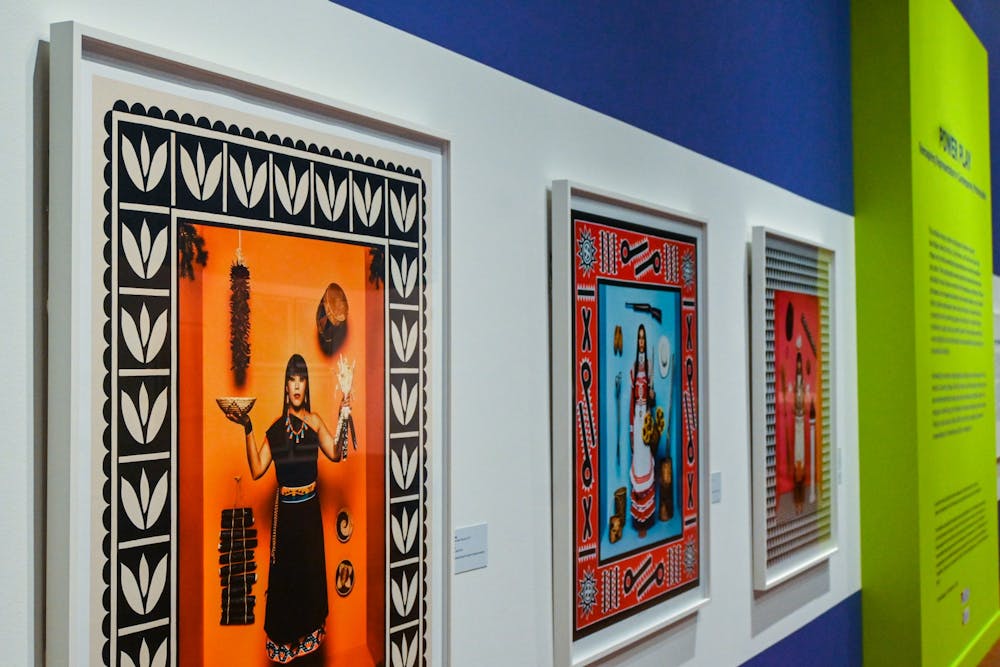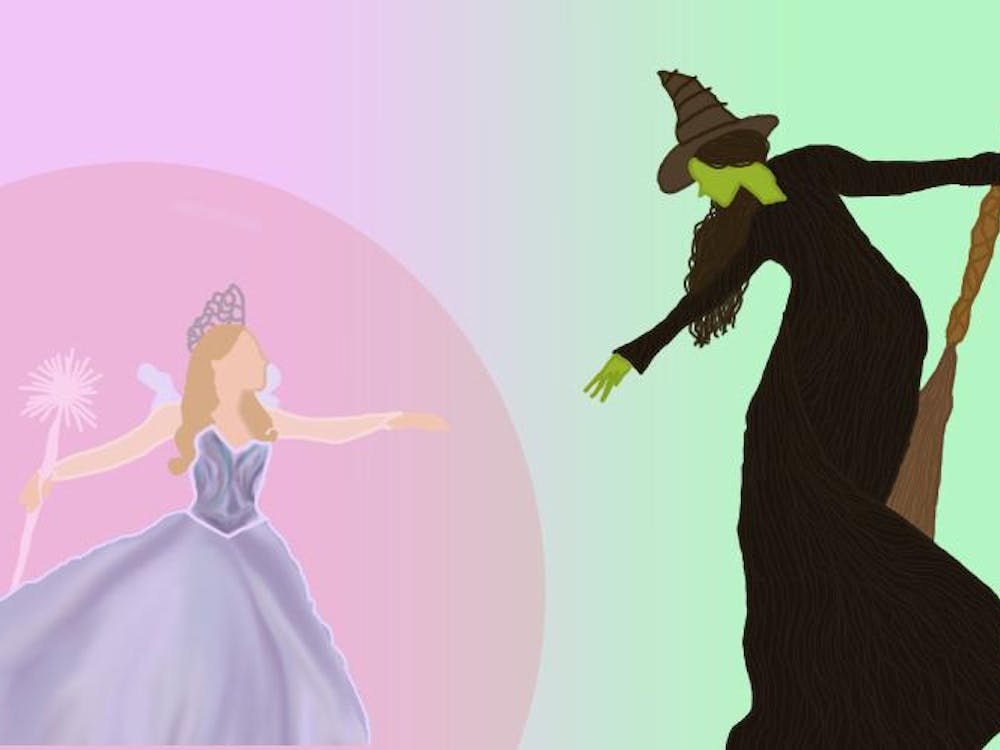“Power Play: Reimagining Representation in Contemporary Photography,” the latest exhibit at the University’s Fralin Museum of Art, reimagines popular feminine figures like Disney princesses and American girl dolls to criticize mainstream media’s definitions of gender and social roles. Organized by Assistant Curator Hannah Cattarin, Curator of Indigenous Arts of the Americas Adriana Greci Green and Curator of Exhibitions Laura Minton, this photography exhibit features the work of five female artists — Sarah Maple, Tokie Rome-Taylor, Cara Romero, Martine Gutierrez and Wendy Red Star — that harness fashion, color, and staging to construct powerful messages.
Each artist uses her cultural upbringings and individual techniques to criticize reinforced ideas of femininity, gender roles and identity. Together, their photographs aim to override the predominant narratives in media, challenging traditional standards and connecting the past to the present — an aim solidified by the written introductions placed next to each artists’ work in the exhibit.
“I love the variety that’s shown,” museum-goer Glenna Ohlmes said. “I think the first time I came through it, I didn’t appreciate it until I read about each one.”
Maple’s “Disney Princess” series confronts harmful representations of femininity through her depiction of princesses in occupational settings. Each princess can be seen performing tasks outside of the domestic environment — Snow White works in a chemistry lab, Sleeping Beauty is the surgeon in a hospital, Belle coaches a soccer game and Ariel leads a business meeting.
Maple intentionally portrays each princess in her traditional outfit from the films to confront stereotypical gender roles and illuminate how media influences society’s creation and enforcement of these roles. The British artist uses her “mixed religious and cultural upbringing” to inspire her pieces, challenging the status quo.
Tokie Rome-Taylor’s work confronts the representation and erasure of Black presence in Western history. Her series depicts three African American children in wealthy traditional European attire to convey the idea of “creolization” — the blending of European and African cultures that resulted in extensive violence and forced enslavement throughout American colonization.
Rome-Taylor's work “[reaches] back to address the erasure of worth in how black bodies are perceived and represented,” countering inaccurate stereotypes and historically inferior depictions of people of color.
Romero’s “First American Girl” series lies in the center of the exhibit, with three pieces that portray Native American women in traditional attire to critique stereotypical representations of Native culture in modern media. The women are in brilliant colors with bright backgrounds that imitate doll packages to address and correct disrespectful representations of Native Americans in toys.
Each woman is from a different Native American tribe, and Romero herself is a citizen of the Chemehuevi Indian Tribe of California. Her upbringing on the Chemehuevi reservation informs her approach to representing Native identities in modern art, and enables her to accurately address the issues that these communities find important.
To the right of Romero’s series in the exhibit is Martine Gutierrez’s “Lineup” series, which uses photographs of thin yet curvy mannequins and dolls to critique the unrealistic physical ideals that society sets for women and the way that these ideals shape the construction of feminine identities. The pieces are both self-portraits, capturing Gutierrez attempting to blend in with the mannequins she poses with.
The purpose of the work, as Gutierrez explains in an introduction to the exhibit, is for Gutierrez to discuss her own identity and how it fits within society, not just as a woman but as a “trans woman, Latinx woman and a woman of Indigenous descent.” Gutierrez’s insertion of herself among idealized female bodies expresses the reinvention of queer embodiment and provokes the viewer to see society through a new lens.
Finally, Wendy Red Star’s “Four Seasons” series is showcased. Using her background on the Crow Indian Reservation, the Apsáalooke artist comments on the erasure and disappearance of Native peoples using life-size dioramas similar to natural history museums.
While traditional dioramas often depict landscapes and animals that are extinct, Star uses herself as the subject and meets the viewer's gaze to communicate the often ignored truth that Native people still exist. Dressed in honorable attire and using witty techniques such as irony, Star confronts widespread ideas of Native disappearance and Western representations.
“We are hoping to shift our audiences' perceptions about sites and objects of consumerism which play an important role in reinforcing gender construction and stereotypes,'' the curators said. “We were able to purchase ten of the artworks in the exhibition, one or more by each artist, for The Fralin’s permanent collection. You might see the photographs again in future exhibitions at the museum.”
“Power Play” is truly a moving exhibition. Not only does it entertain museum-goers, but it also inspires them to investigate the standards and cultural values at play in their own lives. For additional information, the museum will host a virtual panel with all five artists over Zoom Nov. 18 from 5:30 to 7 p.m. The exhibit will be on display until Dec. 31 and is located in the J. Sanford Miller Family Gallery on the second floor of the Fralin.
CORRECTION: This article previously misrepresented Romero's "First American Girl" series as portraying Native American women in stereotypical attire. The series actually portrays these women in traditional attire and regalia, and the article has been updated to reflect this.
CORRECTION: This article has been corrected to more accurately represent the exhibit's title, the titles of exhibit organizers, the origins of quotes initially attributed to the exhibition, and the name of the gallery in which the exhibit is located. It has also been corrected to more accurately reflect the contents of Tokie Rome-Taylor's series and their intended message.







